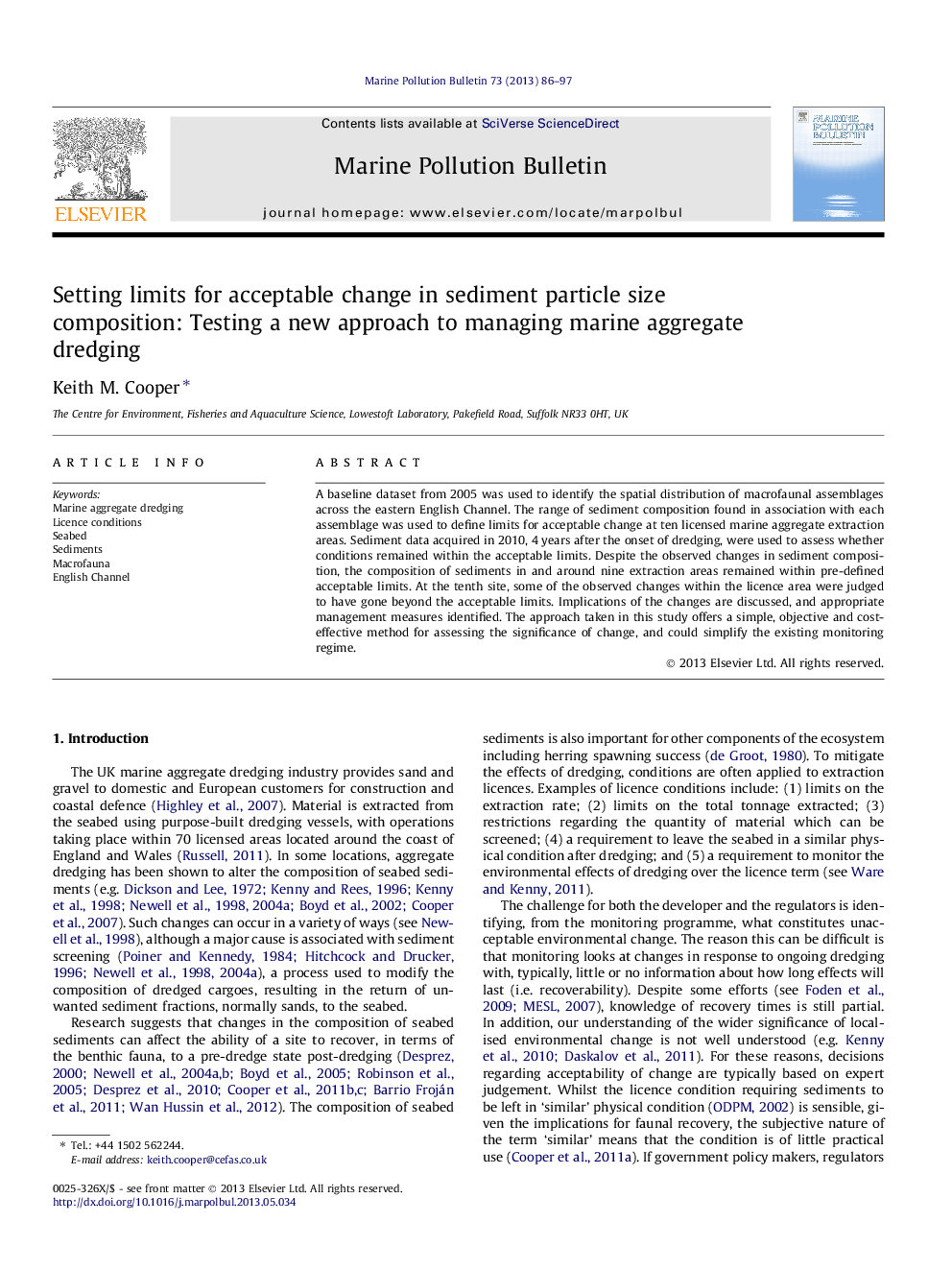| Article ID | Journal | Published Year | Pages | File Type |
|---|---|---|---|---|
| 6359404 | Marine Pollution Bulletin | 2013 | 12 Pages |
Abstract
A baseline dataset from 2005 was used to identify the spatial distribution of macrofaunal assemblages across the eastern English Channel. The range of sediment composition found in association with each assemblage was used to define limits for acceptable change at ten licensed marine aggregate extraction areas. Sediment data acquired in 2010, 4Â years after the onset of dredging, were used to assess whether conditions remained within the acceptable limits. Despite the observed changes in sediment composition, the composition of sediments in and around nine extraction areas remained within pre-defined acceptable limits. At the tenth site, some of the observed changes within the licence area were judged to have gone beyond the acceptable limits. Implications of the changes are discussed, and appropriate management measures identified. The approach taken in this study offers a simple, objective and cost-effective method for assessing the significance of change, and could simplify the existing monitoring regime.
Related Topics
Physical Sciences and Engineering
Earth and Planetary Sciences
Oceanography
Authors
Keith M. Cooper,
